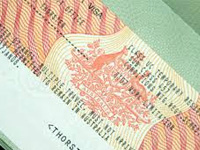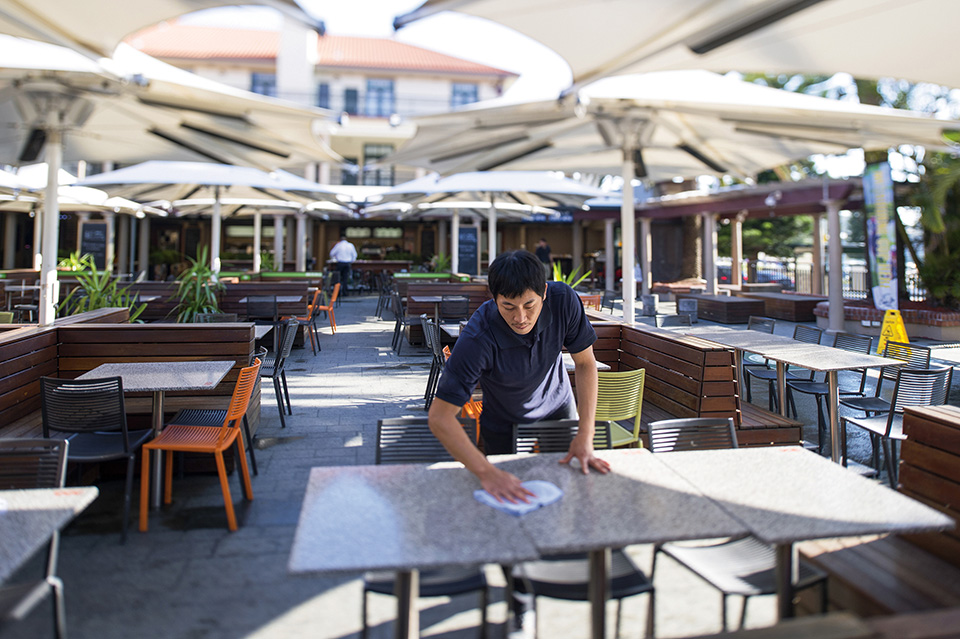
Overcoming the skills shortage
The South Burnett region of Queensland is a small but highly productive area that relies on orchards, wineries, peanuts, navy beans, thriving beef and pork industries and energy production as well as tourism attracting around 60,000 tourists every year – all very intensive labour employers.
Despite a 5.9% unemployment rate, the region is dependent on a transient labour force to stay afloat. So much so, the South Burnett Directions Steering Committee has recently begun looking at ways to lure more backpackers into the region.
“As a rule locals will always get priority when it comes to job seekers but businesses are beginning to look more towards foreign workers,” says Proston farmer Barb Madden. “We’ve got some fantastic locals that have been working for us for many years and our business would not survive without those locals. What we find though is some of the roles that we have that are sort of more casual or suitable for more transient labour, we’re struggling to fill locally.”
It is a familiar scenario across regional Australia.
Work-hungry backpackers are flocking Down Under to work in record numbers, and competing for jobs with local school-leavers.
Immigration data reveals a 33% surge in the number of foreigners granted working holiday visas since the start of the global financial crisis. The Immigration Department issued a record 249,231 backpacker visas during 2012/13. Three times as many young backpackers from China, Italy and Taiwan were granted visas during 2012/13 than at the start of the global financial crisis in 2008/09. Backpacker numbers have jumped 52% from France, 29% from Germany and 15% from the UK.
The Centre for Population and Urban Research at Monash University has found that Australia now has one foreign worker for every year 12 school leaver, all competing for entry-level jobs in retailing, construction and, especially, hospitality. The report says 14.5% of 15-to-19-year-old jobseekers and 9.4% of those aged 20-24 were unemployed in May, compared to 5.6% in the general population.
Backpackers from 29 nations can work in Australia for up to a year, so long as they do not spend more than six months with each employer. Those who spend at least three months working in a remote area can apply to stay for a second year.
But, newer statistics from the Department of Immigration suggest that working holiday visa applications in Australia have substantially declined in the last six months. The new statistics, available on the Department of Immigration’s website show that while WHV applications have risen to an all time high in the 12 months between the middle of 2012/13, the vast majority of those 210,369 visas were granted before January 2013 – the same time application fees rose from $280 to $365.
Indeed, it seems the hike in fees has caused the kind of serious slow down that the backpacker sector originally predicted it would. In late 2012, many in the backpacker sector predicted that the increased application fees for both first and second year working visas would act as a deterrent to young travellers coming to Australia looking for work.
This problem has been compounded by the news that on 1 September, another $55 increase was added on top of the existing WHV application fees. This means that in order to now successfully apply for a working holiday visa a backpacker must pay $420 – nearly twice what it cost in 2011.
By comparison a WHV in New Zealand costs travellers slightly less than $150. Operators in the Australian backpacker sector are now worried that more and more backpackers looking to work and travel will head to New Zealand instead of here.
The other means by which employers can get temporary labour is through the Temporary Work (Skilled) (Subclass 457) visa program to fill genuine short term skill shortages by recruiting qualified workers from overseas.
The Tourism and Hospitality 457 Visa Program has been developed by the Department of Immigration and Citizenship for tourism and hospitality employers. The program aims to assist employers in sponsoring overseas workers and to address labour and skill shortages across the tourism and hospitality industries.
The 457 visa is a temporary skilled visa and 457 visa holders can only work in eligible skilled occupations, but can:
• work in Australia for a period of between one day and four years
• change employers, providing the new employer is an approved sponsor
• bring any eligible family members, who can work and study, with them to Australia
• travel in and out of Australia as often as they like.
The Australian government introduced significant reforms to the Temporary Work (Skilled) (Subclass 457) visa program that came into effect on 1 July 2013. The changes were not intended to target compliant sponsoring employers or create an additional compliance burden for them. The intention is to maintain the rights of subclass 457 visa holders in the Australian workplace and protect jobs and training opportunities for Australian employees.
Key legislative changes include:
• Labour market testing for certain nominated occupations – this requires the sponsoring employer to evidence there is no suitably qualified and experienced Australian citizen or permanent resident readily available to fill the position (this requirement is likely to
commence in November 2013)
• The Temporary Skilled Migration Income Threshold has increased to $53,900
• Removal of occupation-based exemptions for the English language requirement, meaning that more 457 visa applicants will be required to undertake an English language test
• Fair Work inspectors given powers to investigate compliance with sponsorship obligations and employer sanctions provisions
• Enhanced sponsorship obligations
• Introduction of enforceable undertakings – where there has been a breach of a sponsorship obligation, an enforceable undertaking may be entered into between the sponsoring employer and the minister to remedy the non-compliance.
Of course, along with the new regulations there is the inevitable cost – millions of dollars in fee increases under federal Labor’s revised visa application charges. Business groups fear the $540 million in fee increases over the next four years are designed as a revenue-raising measure that will act as a disincentive for employers using foreign labour. There is no hint that the new government will revise these fees.
Applicants were hit with higher fees, rising from $450 to more than $1000 from July. The cost for a family of four applying to the scheme went from $450 to $5050.
Despite the extra costs, over the next five years 43% of businesses expect to become more reliant on 457 visa holders to fill skilled vacancies as baby boomer retirement leaves a skills gap to be filled by foreign workers. Australian companies are looking for creative ways to grow and sustain their workforce, according to a skilled migration survey. The KPMG survey found that Australia’s skills shortage problem has increased by about 10% with nearly 40% of respondents to the survey increasing their skilled migration intake during the past 12 months.
Head of KPMG’s migration practice Karen Waller, says employers are continuing to recruit offshore to satisfy their skills need. “Even as economic activity is slowing across some sectors, the accelerating retirement of the baby boomer generation is leaving large skill and experience gaps in the Australian workforce,” she says. “More than 28% of respondent businesses reported that they were already feeling the effects of the departure of baby boomers from the workforce.”
This debate around 457 visas boils down to a difference of opinion on how best to identify a domestic skill shortage for which a 457 visa can be used.
For Labor, the most desirable option for recognising skill shortages is employer-conducted labour market testing.
Labor’s bill proposes that employers advertise for the occupation in which they seek to sponsor an overseas worker. Once an employer can prove that their recruitment efforts have been in vain because no suitable candidates have applied, the employer can make an application to sponsor a 457 visa worker to the department.
For the Liberals, the status quo suffices. They argue that the current 457 visa system is working well, with rorts occurring on a very limited basis and that there should be as little constraint as possible on an employer seeking to sponsor a 457 visa worker. The current mechanism for enabling employers to use the 457 visa scheme is the Consolidated Sponsored Occupations List. So long as an occupation is on this list, then an employer can sponsor an overseas temporary migrant worker.
The issue with employer-conducted labour market testing is that this won’t stop the rorts of the 457 visa scheme. Good employers already recruit for local workers and when they can’t, they make an application to the department to use the 457 visa scheme. There is no doubt bad employers exist.
Advertising in itself is not a litmus test because unscrupulous employers who want to rort the system can do so.
They can fiddle with the job advertisement so that the pay is too low or the conditions are poor; they can turn back legitimate job seekers who respond to their advertisement; they can even stick the advertisement somewhere out there in cyberspace with no real intention of recruiting locally.
Put simply, a dodgy employer can do all manner of things to avoid Labor’s proposal of employer-conducted labour market testing and there is very little the Department of Immigration and Citizenship can do about it. The department does not have the manpower to really scrutinise whether an employer’s 457 visa application is legitimate.
The Australian Hotels Association has accused the immigration minister of going too far with criticism of hospitality employers in particular. AHA national chief executive officer Des Crowe said the association was “seriously concerned” with comments in the parliament by the immigration minister Brendan O’Connor which he says is an attack on the tourism and hospitality industry.
In a statement Mr O’Connor said there were 106,680 457 visas in use last month, up 55% since figures for this time in 2010 and representing 0.7% of the country’s working population. “It concerns the government that, at a time when the labour market has been flattening and some sectors and regions have experienced lay-offs and increased unemployment, the Subclass 457 program has continued to grow,” Mr O’Connor said.
Mr Crowe said the minister’s suggestion that hospitality employers are no longer providing jobs for young Australians is disappointing and indicates the government is “playing politics at the expense of good policy”.
“In contrast to the minister’s statement, jobs in hospitality and tourism remain some of the best opportunities for young Australians to engage in the workforce. Millions of Australians started their working life waiting tables or pulling beers in their local hote, and every year many thousands more continue to do so.
“The reality is that there were 5390 457 visas granted in the industry over the past 12 months from a total industry workforce of 796,000, amounting to less than 1% of all workers. This figure includes visas held by many cooks and chefs working not in hotels or restaurants but in other businesses such as hospitals, aged care facilities and mining sites.
“Despite making up a relatively small proportion of the industry workforce, 457 visas remain an important part of business strategies to overcome shortages of skills and labour that can’t be filled by the local population.”
Probably of more concern to the accommodation and hospitality industries is the wage structure for weekend and holiday work.
The recent TTF-MasterCard Tourism Industry Sentiment Survey showed 67% of respondents ranked the need for a review as highly important blaming penalty rates for stifling Australia’s tourism growth and making it impossible to compete with destinations such as Bali, Thailand and Fiji.
TTF chief executive Ken Morrison said tourism was a seven days a week, 24 hours a day business. “Penalty rates make it very difficult to open on public holidays and on Sundays and provide the customer service people want,” he said. “If we’re going to grow tourism we need to recognise that the current penalty rates remain really discriminatory against tourism.
“We’re a high-cost country compared to our competitors, so the customer service experience and value needs to be there. It’s difficult to do that when we have such a punishing penalty rates regime.”
Mr Morrison said the industry would be able to employ more people if penalty rates were lower. “The reality is people’s lifestyles have changed a lot,” he said. “People don’t have the same nine to five approach to their working life that they once did they’re looking for more flexibility.”
Accommodation Association of Australia CEO Richard Munro said there were four public holidays over Easter this year. “As a result the accommodation operators were paying 11 days of wages for four days of work, based on the fact that on a public holiday wages are 275%,” he said. “Public holidays are the peak time people are travelling and hotels and motels are basically shutting down as much as they can to save on costs.”
Mr Munro said those that did stay open were usually run by owners and family members they recruit for public holidays.
“We’re not about abolishing penalty rates but it’s about bringing back balance to an industry that runs 24/7,” he said.
But Australian Council of Trade Unions president Ged Kearney said penalty rates had been part of the Australian workplace for decades and provided much-needed income for low-paid workers who were required to work weekends and public holidays.
“Employers made a bid to cut penalty rates earlier this year that was rejected by Fair Work Australia, which found they presented no reliable evidence that they cost jobs,” she said. “Cutting penalty rates will hurt workers without creating jobs.
“Money paid as penalty rates does not disappear it is returned to the economy when workers use it to buy goods and services from businesses.
“Reducing penalty rates will hurt these businesses.”

AccomNews is not affiliated with any government agency, body or political party. We are an independently owned, family-operated magazine.







